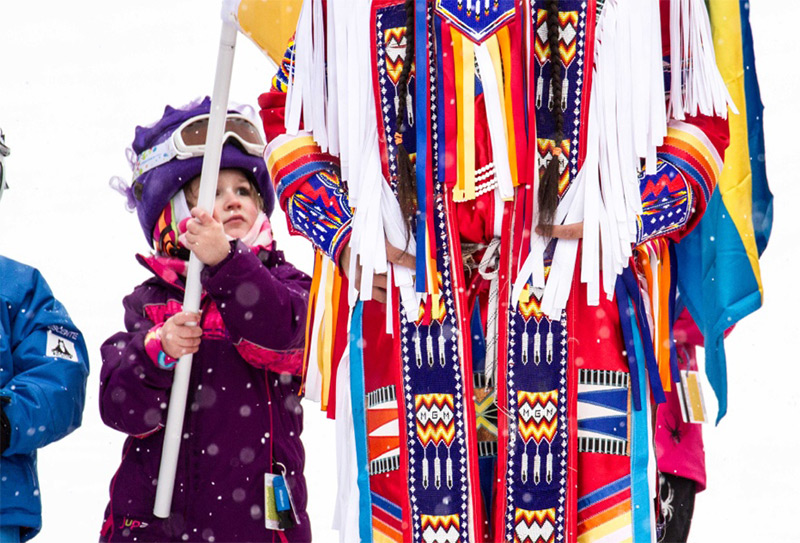Kelly is a professional photographer, television sports broadcaster and a retired Canadian Olympian, shoots from her home base in Canmore, Alberta. www.kellyvanderbeek.com
Winter wonderlands, although photographically spectacular, offer an unique set of challenges on their own in order to capture an image as you see it. Here are a few of my tips that I use while shooting Canada’s snowy sights.
1) Avoid the Snowy Blues – Shoot in RAW!
Since snow can often be difficult for a camera’s automatic white balance to accurately judge, selecting RAW as the image quality is always a safe bet. This is especially true when shooting a shadowy winter scene because snow in the shade often looks blue.
Just in case you or your camera didn’t get that setting quite right, RAW image quality provides the flexibility to adjust white balance in your processing phase.
2) You Want White – Overexpose
No, your camera is sadly not a sentient being and you will have to let it know that the snow isn’t one big 18% grey card. Generally, setting your camera’s exposure compensation to +1, +1.3 or +1.6 can make all the difference.
A good rule of thumb is to have small bits of the snow blow out (enable your camera’s Highlight Alert in order to see this while on location). As long as I can see that I’m not blowing out too much of the image then it’s usually just right.
3) Capture the Cold – Boost your Clarity
Have you ever noticed how sharp everything looks at -30°? If not, then you may have been lucky enough to avoid such temperatures. However, most Canadians have experienced regular cold snaps that hit these bone-chilling temperatures. Due to the crystallization in the air at very low temperatures, scenes often take on a high definition look where everything appears sharper. To achieve this look, I crank up the clarity setting in my camera before shooting. This means less work in the processing phase and ideal results.
4) Avoid Being Bland – Add Punches of Colour
The best way to add punch to any winter image is to add colour. Whether this is achieved with a bird, clothing, sunset, frozen berries, etc. colour can be a wonderful additive to any snowy scene.
5) Contrast – Black and White
Winter lends itself extremely well to black and white photography. I’d even go so far as to say the contrast is crying out for it! Before setting out in the cold, set your camera settings to high contrast so you capture as close to your final product as possible. Patterns and stark contrast are key characteristics to seek out when shooting B&W.
6) Dexterity is Key – Choose the Right Glove
Sadly, I was not blessed with good circulation and this has led me on a never-ending search for the perfect photographer’s winter glove. While I don’t want to lose any fingers to a nasty case of frostbite, I do want to have sufficient dexterity to work with my camera out in the field. Be sure to have a selection of gloves and mittens to choose. The lighter and thinner the glove, the better you can handle camera. Also, it helps having your camera’s settings set before leaving your warm abode.
The images for this piece were taken with the Tamron 70-200mm F/2.8 VC and the Metz mecablitz 58 AF-2 flash. I truly enjoyed using the Tamron 70-200mm lens and found it served me just as well as competing brands for the same product. The clarity the lens achieved really impressed me as well as the feel and functionality. Image stabilization is of great importance to me since I mostly shoot handheld and the Tamron’s VC was bang on. The Metz flash was easy so use and helped my colours pop!
>>View the Tamron 70-200mm F/2.8 VC















